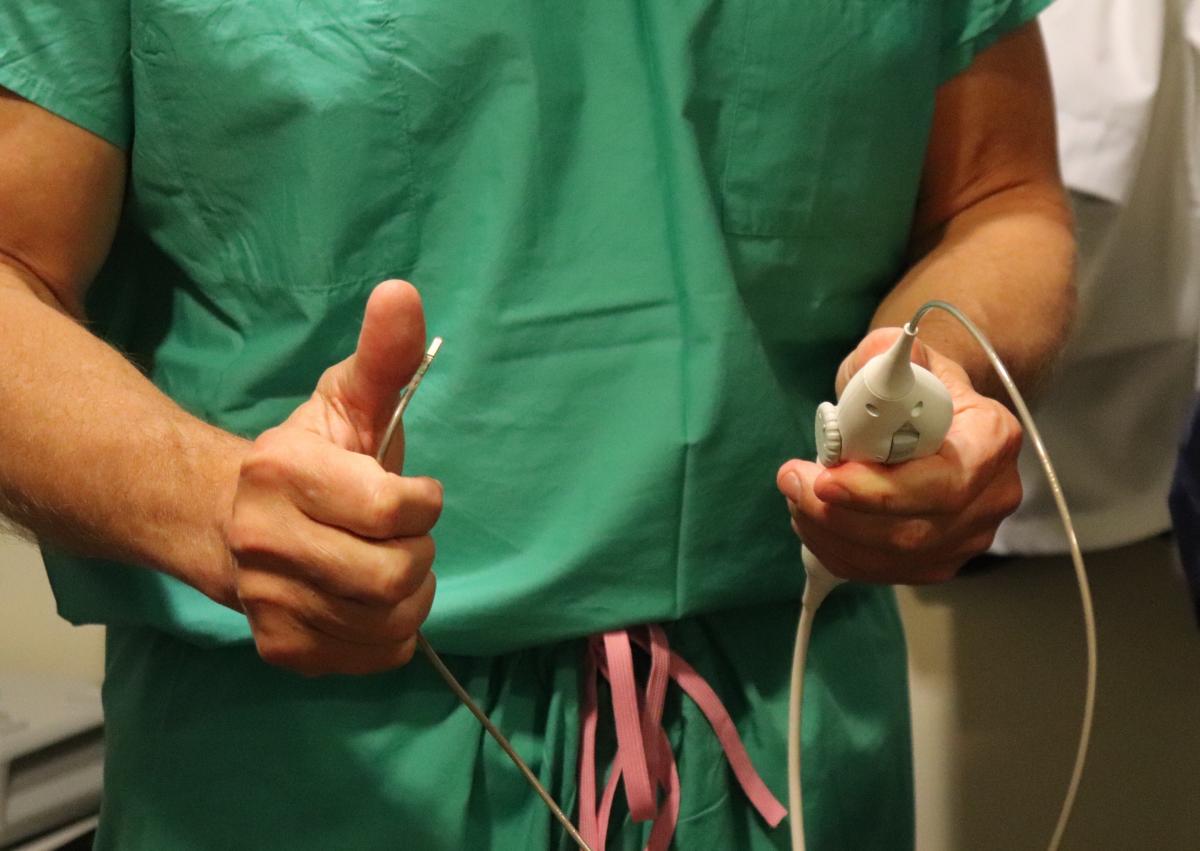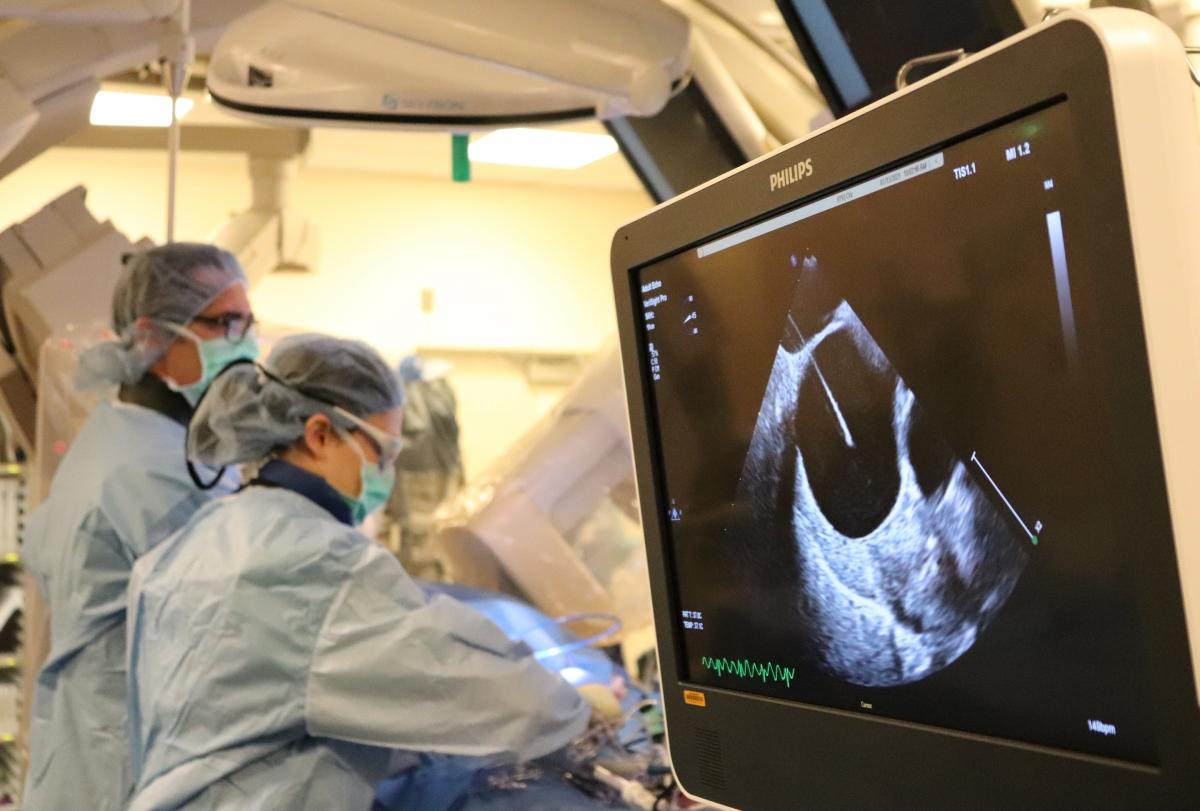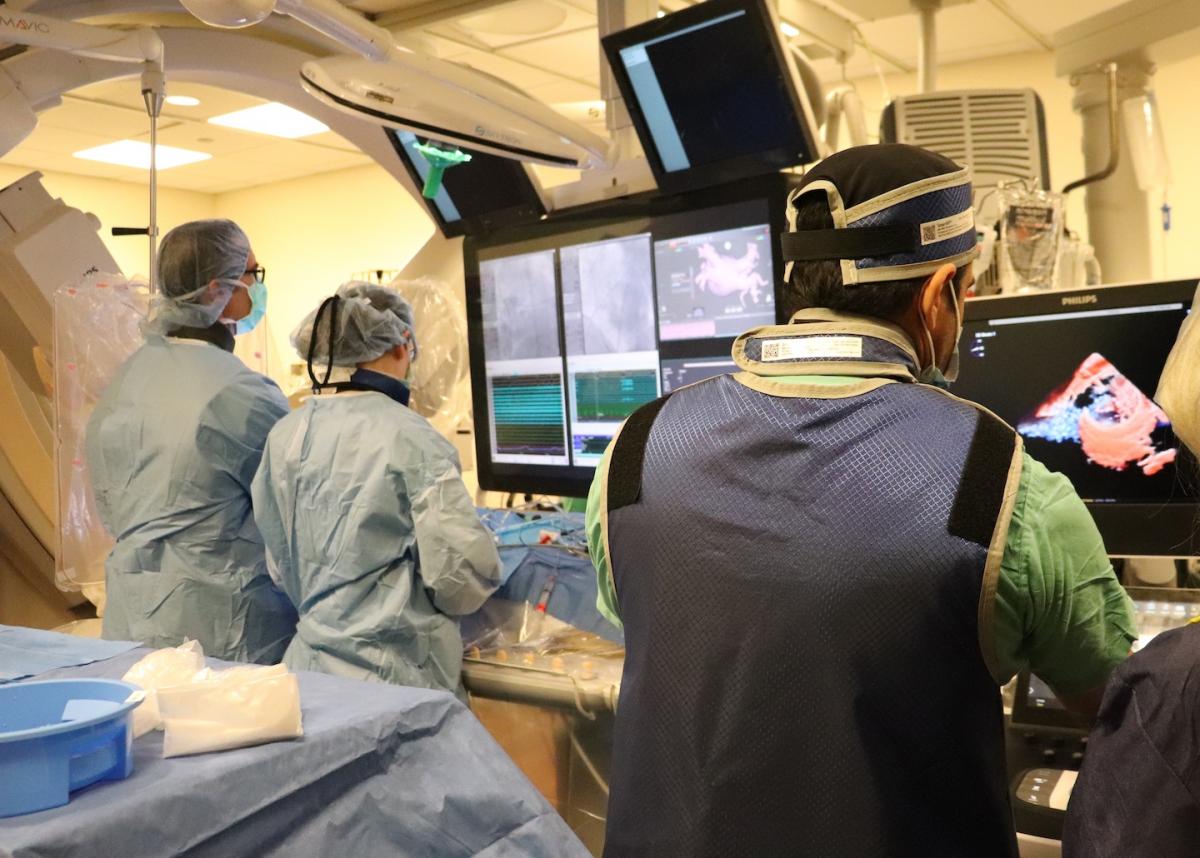
A live, 3-D intra-cardiac echo (ICE) ultrasound image from inside the atrium of the heart taken during the first cryo-ablation a EP procedure performed using the technology at Northwestern Medicine.
July 21, 2021 — Northwestern Medicine Bluhm Cardiovascular Institute recently became the first cardiovascular program in the United States to use a new real-time, 3-D intra-cardiac echocardiography (ICE) imaging device for patients with heart rhythm disorders.
 The new Philips Healthcare VeriSight Pro ICE catheter offers superior 2-D and 3-D live image guidance for a wide range of procedures in structural heart disease and electrophysiology (EP), allowing interventionalists to navigate procedures. The technology can also help physicians perform procedures without putting patients under general anesthesia and reduce the need for ionizing radiation from X-ray angiography imaging systems where have been the imaging standard in cath and EP labs.
The new Philips Healthcare VeriSight Pro ICE catheter offers superior 2-D and 3-D live image guidance for a wide range of procedures in structural heart disease and electrophysiology (EP), allowing interventionalists to navigate procedures. The technology can also help physicians perform procedures without putting patients under general anesthesia and reduce the need for ionizing radiation from X-ray angiography imaging systems where have been the imaging standard in cath and EP labs.
Bradley P. Knight, M.D., medical director of cardiac electrophysiology and director of the Heart Rhythm Center at Northwestern Medicine was the first to use the new VeriSight Pro ICE catheter during a cryo-ablation procedure to treat a heart arrhythmia. Knight worked with Philips during the development of the device. While 2-D ICE has been available for years, the new system allows real-time, 3-D imaging inside the heart, which is much easier to interpret and is easier to use when guiding devices inside the heart.
“ While most echocardiography is done from outside the heart, or via the esophagus, this is a small device that can be placed inside the heart chambers. During the procedure, it provides us real-time images of the heart’s blood flow, structures, and interventional tools being navigated within the heart, and some areas of the heart that are difficult to view through more traditional echocardiography,” explained Knight, medical director of cardiac electrophysiology and director of the Heart Rhythm Center at Northwestern Medicine and the Chester C. and Deborah M. Cooley Distinguished Professor of Cardiology at Northwestern University Feinberg School of Medicine. “I’ve always been interested in better imaging in the electrophysiology lab to directly visualize what we are doing inside the heart during procedures such as catheter ablation, and the capabilities of this new real-time 3-D echo catheter far exceed anything previously available.”

Bradley Knight, M.D., reviews placement of the cryoabation catheter in 2-D image mode using ICE ultrasound images from within the heart during the first procedure when it was used at Northwestern Medicine.
Standard transthoracic echocardiograms, or those performed on the chest’s surface, provide limited views of some heart structures far from the chest surface. Transesophageal echoes, or echoes performed through the esophagus, often require general anesthesia.
Knight said for a certain group of patients, general anesthesia is not recommended and is not needed when using this real-time 3-D ICE technology. This will help open up a class of heart rhythm procedures for that patient group and allow most patients a quicker recovery time and speedier exit from the hospital.
ICE offers live image guidance for a wide range of procedures in EP and structural heart disease, allowing interventionalists to optimize cath lab performance. Some benefits of ICE are excellent patient tolerance, reduction of fluoroscopy time, and lack of need for general anesthesia or a second operator.
“Cardiac medicine is improving at astonishing speed, and this is just one example of that,” said Patrick McCarthy, M.D., executive director of the Bluhm Cardiovascular Institute and the Heller-Sacks Professor of Medicine at Feinberg. “Our team at Northwestern Medicine Bluhm Cardiovascular Institute is pleased to be the first to offer this technology for heart rhythm procedures.”

Bradley Knight MD cryoablation procedure using 4D ICE.jpg
About Northwestern Medicine’s Bluhm Cardiovascular Institute
Northwestern Medicine’s Bluhm Cardiovascular Institute is one of the top 10 national programs for cardiology and heart surgery, according to U.S. News and World Report, and ranked the top cardiovascular program in Illinois and the surrounding states for more than 10 consecutive years.
For more information: heart.nm.org
Related Intra-cardiac Echo Content:
Mayo Clinic First to Use Next Generation 4D ICE System to Guide Structural Heart Procedures
Trends and Advancements in Intra-cardiac Echo Imaging Systems
Intra-Cardiac Echo Aids EP Ablations, Structural Heart Procedures
Intracardiac Echo Should be More Widely Adopted to Minimize Radiation in Catheter Ablations


 November 14, 2025
November 14, 2025 









